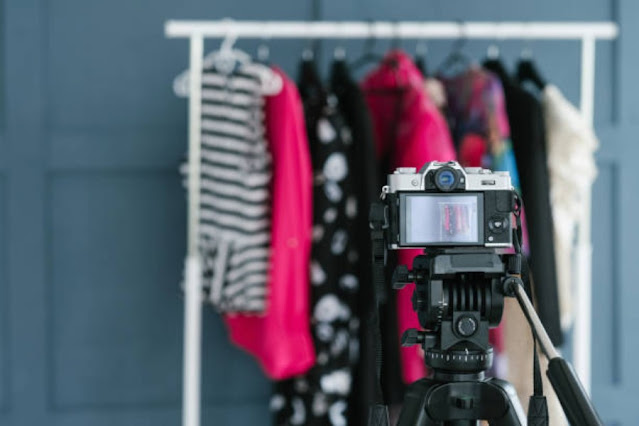- Get link
- X
- Other Apps

The Shapers of Style: Exploring the Most Influential Fashion Trends
Introduction
Fashion trends have always been a reflection of society,
culture, and individual expression. Over the years, various influencers and
entities have played significant roles in shaping the fashion landscape. From
iconic designers and celebrities to social media platforms and cultural
movements, this essay explores the diverse and dynamic influencers behind the
most influential fashion trends.
Fashion Designers and
Couturiers
Fashion designers are the architects of style, and their
creations often set the tone for entire seasons. Renowned designers such as
Coco Chanel, Christian Dior, and Karl Lagerfeld have left an indelible mark on
the fashion industry. Their innovative designs, choice of fabrics, and
attention to detail have inspired generations of fashion enthusiasts. In
contemporary times, designers like Chanel's creative director Karl Lagerfeld,
and the creative minds behind luxury fashion houses such as Gucci, Louis Vuitton,
and Balenciaga, continue to influence global fashion trends with their runway
collections, pushing boundaries and redefining fashion norms.
Celebrities and Style Icons
Celebrities have an immense influence on fashion trends,
with their red carpet appearances and everyday outfits being closely watched
and emulated by fans worldwide. Actors, musicians, and models often collaborate
with designers, becoming brand ambassadors and trendsetters. Icons like Audrey
Hepburn, Marilyn Monroe, and David Bowie have had a lasting impact on fashion,
inspiring timeless trends. In recent years, celebrities like Rihanna, Beyoncé,
and Harry Styles have become synonymous with innovative and boundary-pushing
fashion choices, challenging gender norms and promoting inclusivity and
diversity in the industry.
Street Style and Fashion
Bloggers
Street style and fashion bloggers have democratized fashion
by showcasing everyday people's unique and eclectic fashion choices. Social
media podiums like Instagram and TikTok have provided a platform for fashion
influencers to reach global audiences instantly. Bloggers like Chiara Ferragni,
Aimee Song, and Bryanboy have transformed their passion for fashion into
influential online personas. Their curated looks, outfit inspirations, and
collaborations with brands have made them instrumental in shaping fashion
trends, especially among younger demographics.
Cultural Movements and
Subcultures
Cultural movements and subcultures have historically
influenced fashion trends, challenging mainstream aesthetics and fostering
unique styles. The punk movement of the 1970s, with its rebellious and DIY
ethos, introduced distressed denim, leather jackets, and unconventional
hairstyles. Similarly, the hip-hop culture of the 1980s and 1990s brought
oversized clothing, sportswear, and sneakers into mainstream fashion.
Subcultures like goth, grunge, and rave have also left their mark on fashion,
inspiring designers and shaping street style around the world. Today, cultural
movements such as gender fluidity and sustainable fashion are driving
transformative changes within the industry, encouraging inclusivity and
eco-consciousness.
High-End Fashion Events and
Fashion Weeks
Fashion events and weeks held in fashion capitals like
Paris, Milan, New York, and London serve as global platforms for designers to
showcase their latest collections. These events not only set trends but also
influence the direction of fashion for the upcoming seasons. The runway shows,
attended by celebrities, influencers, and industry insiders, garner extensive
media coverage, amplifying the impact of the showcased designs. Fashion weeks
are where designers experiment with innovative materials, silhouettes, and
themes, setting the stage for future trends in ready-to-wear and couture
fashion.
Digital Platforms and Social
Media
Digital platforms and social media have revolutionized the
way fashion trends are disseminated and consumed. Fashion brands now leverage
platforms like Instagram, TikTok, and Pinterest to reach global audiences
instantly. Social media influencers collaborate with brands, creating visually
appealing content that showcases the latest fashion pieces. The accessibility
of fashion content on these platforms allows consumers to stay updated with the
latest trends, making fashion more democratic and inclusive.
Conclusion
Fashion trends are shaped by a dynamic interplay of
designers, celebrities, cultural movements, fashion bloggers, high-end events,
and digital platforms. The diverse and influential figures in the fashion
industry continue to redefine and challenge conventional norms, fostering
creativity and inclusivity. As fashion becomes increasingly globalized and
accessible, the influence of these trendsetters will continue to evolve,
reflecting the ever-changing tastes and values of society. Acknowledging the
multifaceted nature of fashion trends allows us to appreciate the rich tapestry
of creativity and innovation that defines the world of style, making it a
vibrant and constantly evolving expression of human identity and culture.
- Get link
- X
- Other Apps
Comments
Post a Comment